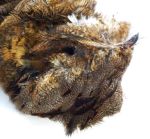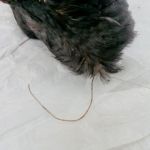Death of a juvenile Pink-necked Green Pigeon
By YC Wee, 24th June 2016;Earlier I hung a bunch of Thousand Fingers Banana or Pisang Seribu (Musa acuminata x balbisiana cv. ‘Pisang Seribu’) in my garden. The ripening fruits attracted Yellow-vented Bulbul (Pycnonotus goiavier) and Javan Myna (Acridotheres javanicus). A few days later I found a juvenile Pink-necked Green Pigeon (Treron vernans) perching on the fallen bunch.
While a Javan Myna was feeding on the fruits, this juvenile Green Pigeon simply stayed still. It allowed me to move very near for photography (above).
After a few hours it moved away but stood among the grass. Thinking it may be injured, I again approached it. Stretching my arms slowly, I managed to catch it without much resistance. It would not take water or mashed banana.
Source: Bird Ecology Study Group






































